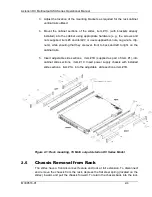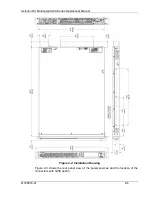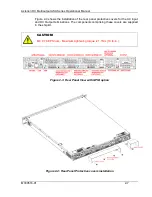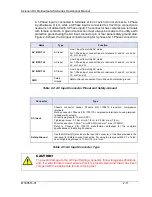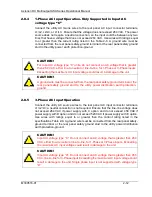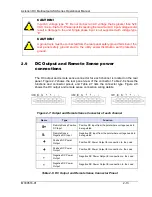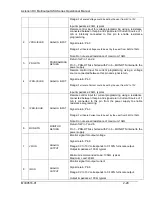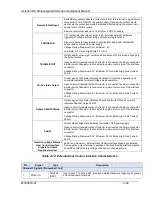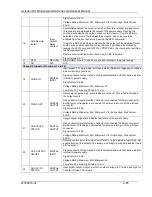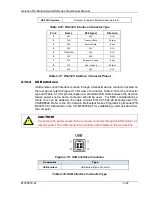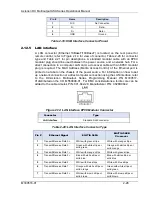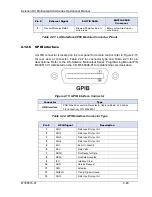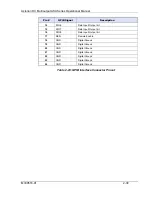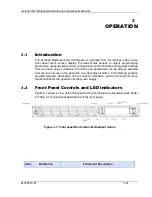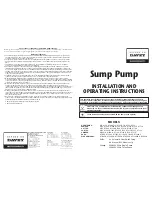
Asterion DC Multioutput ASA Series Operational Manual
M330516-01
2-17
In high performance applications requiring high inrush/ transient currents, additional
consideration is required. The cable wire gauge must accommodate peak currents
developed at peak voltages, which might be up to five times the RMS current values.
An underrated wire gauge adds losses, which alter the inrush characteristics of the
application and thus the expected performance.
Table 2-9 presents wire resistance and resulting cable voltage drop at maximum rated
current, with the wire at 20°C. Copper wire has a temperature coefficient of α =
0.00393Ω/°C at t1 = 20°C, so that at an elevated temperature, t2, the resistance would
be R2 = R1 (1 + α (t2 - t1)).
The output power cables must be large enough to prevent the line voltage drop (total
of both output wires) between the power source and the load from exceeding the
remote sense capability as presented in the specification section. Calculate the
voltage drop using the following formula:
Voltage Drop = 2 × distance-in-feet × cable-resistance-per-foot × current
Size,
AWG
A(RMS),
(90°C wire)
Ohms/100 Ft,
(One Way)
Voltage Drop/100 Ft,
(Column 2 x Column 3)
18
14
0.639
8.95
16
18
0.402
7.24
14
25
0.253
6.33
12
30
0.159
4.77
10
40
0.100
4.00
8
55
0.063
3.47
6
75
0.040
3.00
4
95
0.025
2.38
3
115
0.020
2.30
2
130
0.016
2.08
1
145
0.012
1.74
0
170
0.0098
1.67
00
195
0.0078
1.52
000
225
0.0062
1.40
0000
260
0.0049
1.27
Table 2-9: Wire Resistance and Voltage Drop, 20°C
2.11
Load Considerations
This section provides guidelines for incorporating protective diode networks at the output
of the power supply to prevent damage while driving inductive loads or loads having
stored energy that could be circulated back to the power supply.
2.11.1
Inductive and Stored-Energy Loads
To prevent damage to the power supply from inductive voltage kickback, connect an
antiparallel diode (rated at greater than the supply
’s output voltage and current) across


